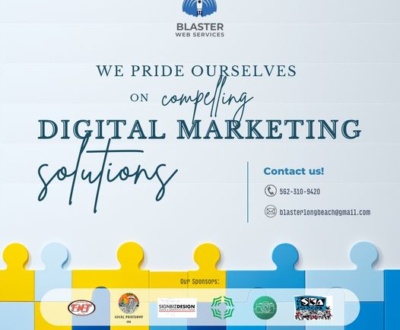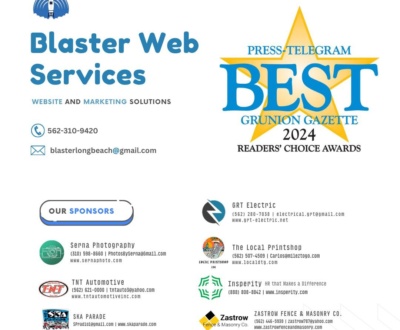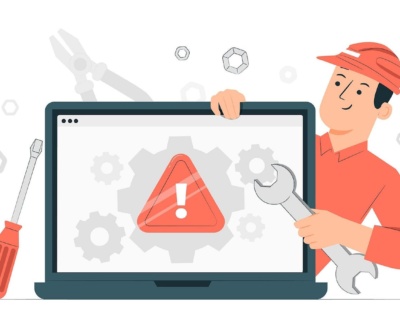A Three-Step Approach to Strategic Content Development
- October 6, 2023
- Blaster Web Services Blog, Business News, Content Development, IT news, IT Services, Support Services, Website Development
Social media and the blogosphere are fascinating because of the conversational nature of it all. Ideas are generated, evaluated, criticized, praised, and recycled.
Often, we’re happy participants in the conversation. Whether adding to the current Techmeme pile-on or chiming in on an ongoing cross-blog discussion within our industry or niche, conversations make blogging tick in a way that static media does not.
But this series is about innovative content, and that means we want to start conversations. After all, the conversation starter gets the links, references, and bulk of the attention.
The key is to see where things are going within your subject matter arena before others do and to integrate that insight with your objectives. You want to create content that not only attracts attention but also helps you achieve the goals that prompted you to create online content in the first place.
Attracting links doesn’t have to be about being controversial, rude, or shallow—as long as you’re strategic about it. Use this 3-step strategic content development process, and you’ll start more conversations, score more links, and gain more traction.
- Information
The first step involves taking a step back and really looking at things, both externally and internally. Although this is only the first of three steps, you’ll find that so few content producers actually begin the process that you’ll develop an immediate advantage.
From an external standpoint, let’s take the time to research and evaluate the possible future of our niche or industry. Where are things going?
- How is technology affecting your niche? What about in 5 years?
- Are there looming economic changes that will impact your topic? How?
- These days, many established markets are being turned upside down. Yours?
- What legal and political issues pose a threat or represent an opportunity?
- What social trends will impact your niche, and what angles do they present?
Next, you’ve got to evaluate where you’re currently at. Be brutally honest. Make a true assessment of your current audience and content so you’ll be able to determine where you can take things.
- Who reads, listens to, or watches your content? Are you sure?
- Why do they read, listen, or watch? Are you sure?
- What are the boundaries of your topic? Why?
- How does your current content measure up in terms of quality?
- What knowledge do you have that gives you an untapped advantage?
Now it’s time to collect the results of your external and internal audit and see what you’ve got.
- What do you now know based on where things are going and where you’re currently at?
- What potential threats to growth and your current positioning did you identify?
- What about opportunities?
Write it all down and reflect. This is the basis of your upcoming ideas and actions.
- Ideas
When it comes to developing ideas about future content, first do a “change nothing” analysis, which means you’ll stay on your current course for now. Change for the sake of change has doomed many a publication, so start your idea generation analysis by envisioning changing absolutely nothing about what you’ve been doing.
- What happens if you change nothing?
- What opportunities are you leaving unrealized?
- Is your current course achieving your objectives?
- What is the competition doing right? Wrong?
- What is your audience asking for? Are you sure?
Next, evaluate the conclusions and ideas you generated from your “change nothing” examination. Whether you change direction or not, what is the likelihood that your objectives will be met (or continue to be met)?
In other words, where should you be going from a return on investment standpoint?
- Who should be reading, listening to, or watching your content?
- What do they want, need or expect?
- Should you be producing content in another format?
- Where can you find more of the right readers, listeners, or viewers?
- Are you inspired and motivated? If not, what would change that?
Finally, the end of the idea phase is a realistic assessment of the challenges you’ll face in implementing a new direction. What are the obstacles to moving in the direction you’ve determined you should be going?
- Identify each obstacle that you face in achieving your new objectives
- Which objective is threatened by which obstacle?
- Can you overcome the obstacle?
- If so, how?
- If not, what’s your new objective?
For example, if you decide you should quit trying to battle the big personal development blogs with text-based content, can you manage quality audio or video production? What might stop you? What’s your fallback position?
- Action
When it comes to taking action with content, we imagine sitting down and actually cranking it out. However creating alternative action options, critically evaluating the feasibility of those options, and planning the development process will keep you from going down the wrong path.
- First, how many options can you create? The more potential paths to remarkable content you have to travel, the more likely you’ll be to latch on to a strategy that provides big results.
- Second, do all of your options make sense? Are they truly in line with your goals and motivations? Apply your critical thinking skills here once again.
- Finally, how will you execute? Do you have the right tools to produce content? Do you need to outsource? What about strategic joint ventures for content development, such as teleseminar interviews with notable experts?
What Happened and Why?
The most important thing to keep in mind about strategic content development is that it’s truly an improvisational process. The reason why you want to identify as many viable options for potentially remarkable content is simple: You’ll almost certainly need to make adjustments on the fly, and it’s easier to do that when you’ve already identified alternatives.
Sometimes you’ll spot an entirely new content strategy, seemingly out of nowhere, and the upfront research and analysis you’ve done will tell you if you need to jump track and move in a new direction. It’s those who haven’t done the groundwork who jump around randomly and jeopardize their existing audience.
So, the final aspect of strategic content development is to constantly evaluate what happened along the way, and why. The most valuable lessons are often found in the things that didn’t work, so treat it all as a learning experience that keeps your content constantly fresh and worth talking about.
Contact Blaster Web Services for your Web Needs!
About us and this blog
We are a digital marketing company with a focus on helping our customers achieve great results across several key areas.
Request a free quote
We offer professional SEO services that help websites increase their organic search score drastically in order to compete for the highest rankings even when it comes to highly competitive keywords.
Subscribe to our newsletter!
More from our blog
See all postsRecent Posts
- Website As A Source Of Marketing April 22, 2024
- Ready to elevate your online presence? April 17, 2024
- How a Digital Marketing Agency Drives Business Growth? April 16, 2024








